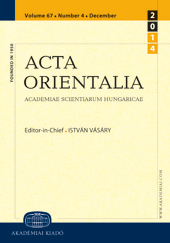The Structure of the Chinese Text: Prosody and Grammar
The Structure of the Chinese Text: Prosody and Grammar
Author(s): Vadim Kassevitch, Nikolai SpeshnevSubject(s): Language studies, Phonetics / Phonology
Published by: Akadémiai Kiadó
Keywords: stress; Chinese; tone; rhythmic patterns; word; grammatical structure;
Summary/Abstract: This paper presents an overview of the authors' recent findings concerned with the rhythmic structures typical of the Chinese text. The proportion of disyllabic and trisyllabic words is shown, disyllabic words or binomials being predominant. The intervals between two strong (full-toned) syllables are found to reproduce the same two-syllable pattern. Chinese is proposed to be classified as a binomial-timed language. With accelerating speech rate, certain syllables tend to loose their inherent full-tone characteristics, thus becoming “weak” or even light (neutral). Since full-toned “strong” syllables are often interpreted as stressed, their “disappearance” under certain conditions seems to be another evidence of superfluity of word-level phonological stress in Chinese.
Journal: Acta Orientalia Academiae Scientiarum Hungaricae
- Issue Year: 56/2003
- Issue No: 2-4
- Page Range: 187-193
- Page Count: 7
- Language: English
- Content File-PDF

